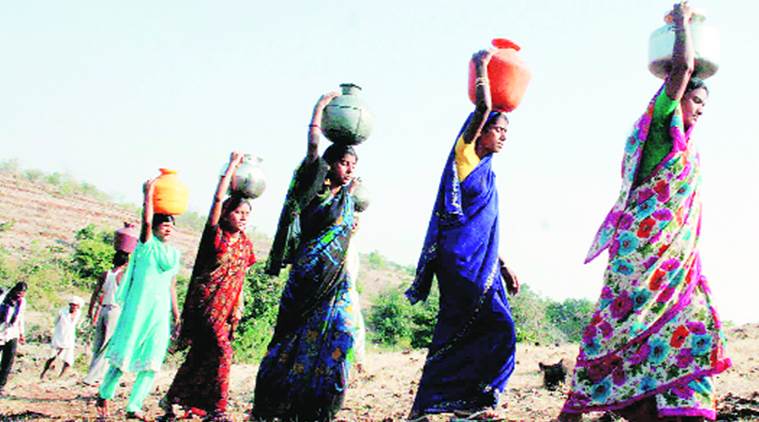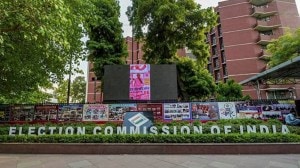- India
- International
Joint project by centre, world bank: Project to improve groundwater levels in 2,000 villages across state
The cost of the Rs 6,000-crore project will be shared equally by the World Bank and the Union Ministry of Water Resources. The first phase of the project is already underway in Bundelkhand since April.
 The cost of the Rs 6,000-crore project will be shared equally by the World Bank and the central government.
The cost of the Rs 6,000-crore project will be shared equally by the World Bank and the central government.
A TOTAL of 2,000 villages in Marathwada and Vidarbha will be covered under the World Bank-backed National Groundwater Management and Improvement Scheme (NGMIS). The government hopes to control the depletion of groundwater and improve its recharge rate in Maharashtra. The NGMIS is also being implemented in Bundelkhand in Uttar Pradesh and Kalahandi, Bolangir and Koraput in Odisha. The cost of the Rs 6,000-crore project will be shared equally by the World Bank and the Union Ministry of Water Resources. The first phase of the project is already underway in Bundelkhand since April.
Confirming the development, a senior official at Ground Water Survey and Development Agency (GSDA) said, “Given that the groundwater table is depleting fast, the project will focus on a 3,727 sq km area in Marathwada and some parts in West Vidarbha in order to build a sustainable water resource system.” In the plan, which has been developed by the Ministry of Water Resources, River Development and Ganga Rejuvenation (MoWR, RD and GR), the project is pitched to recover the gap of 53,365 hectares between Irrigation Potential Created (IPC) and the Irrigation Potential Utilised (IPU).
Marathwada, a rain shadow region, receives less rainfall compared to other parts of the state and most of the cultivation here is heavily water dependent. Existing irrigation practices coupled with the water hungry crops here are other key factors in the fast drying up of the wells. Recently, below normal rainfall during two consecutive years — 2014 and 2015 — had further contributed in depletion of groundwater here.
Hydrologists have spoken about the benefits this scheme would have on the most affected areas in Marathwada. “The scheme will largely benefit water-stressed districts of Aurangabad, Latur, Nanded, Prabhani, Solapur and Osmanabad and involve an expenditure of Rs 250 crore,” said a hydrologist. While the project is expected to roll out sometime by the end of this year, GSDA is currently identifying and mapping the most water-stressed pockets in these two regions, thereby laying a foundation for kick-starting the project in the coming months.
“Along with our regular monitoring of wells, our job now involves studying these wells and their water tables over the last few decades ahead of implementing the scheme,” explained a GSDA official. When asked about the existing cropping pattern and any proposal being mooted to change it, a government official said, “While the primary aim is to restore the groundwater in this region, the project also aims to create awareness among farmers about the ill effects of rapid drying-up of groundwater in the wells.”
Apr 18: Latest News
- 01
- 02
- 03
- 04
- 05






































